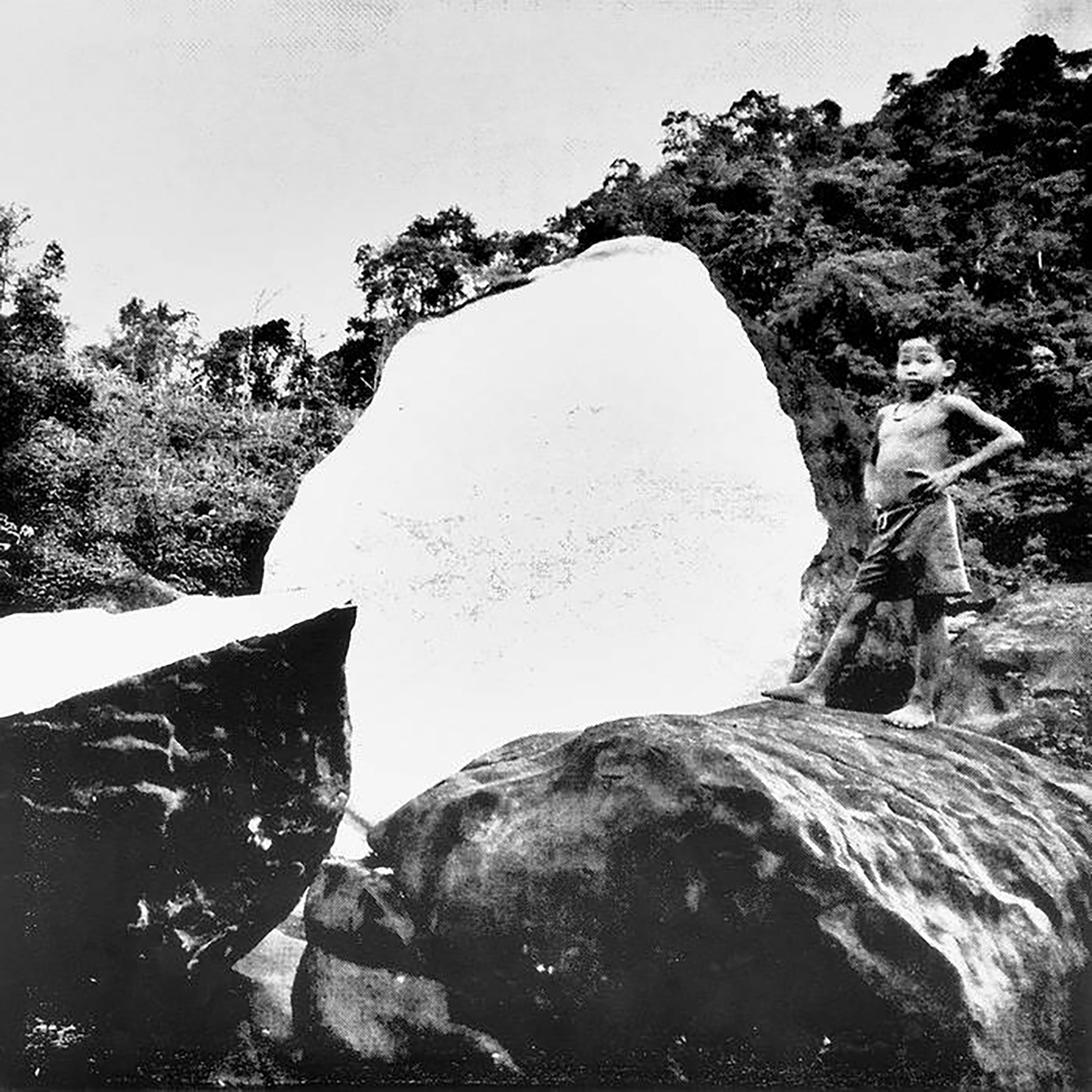Kink Gong, "Zomianscape I -II"
 It is quite a daunting task to keep up with Laurent Jeanneau's massive, continually expanding, and oft-challenging discography, but his vinyl releases always tend to be strong and focused statements worth investigating. In that regard, Jeanneau is having quite a great year, as this latest LP is his third excellent album of 2021 (Kink Gong's Zomia Vol. 1 and Sublime Frequencies' Mien (Yao) being the other two). Zomianscape continues Jeanneau's fascination with "Zomia," which is a half-conceptual/half-geographic term for the ethnic minorities in the hills and mountains of Southeast Asia who live outside national laws and customs. The term was first coined by historian Willem van Schendel in 2002, but it was James C. Scott's The Art of Not Being Governed: An Anarchist History of Upland Southeast Asia that particularly struck Jeanneau, as he conceived of the Zomia series as a "mythological soundscape inspired by a semi-utopic region where state rules don't apply." The raw material for these first two longform "Zomianscapes" was recorded over ten years in Cambodia, Laos, Vietnam, and China, but the boundaries between individual cultures, field recordings, and Jeanneau's own contributions are beautifully dissolved into a mesmerizing stew of hallucinatory sound collage. I suppose Zomia Vol. I achieved a similar end in more bite-sized doses, but this follow up offers a deeper, more immersive plunge.
It is quite a daunting task to keep up with Laurent Jeanneau's massive, continually expanding, and oft-challenging discography, but his vinyl releases always tend to be strong and focused statements worth investigating. In that regard, Jeanneau is having quite a great year, as this latest LP is his third excellent album of 2021 (Kink Gong's Zomia Vol. 1 and Sublime Frequencies' Mien (Yao) being the other two). Zomianscape continues Jeanneau's fascination with "Zomia," which is a half-conceptual/half-geographic term for the ethnic minorities in the hills and mountains of Southeast Asia who live outside national laws and customs. The term was first coined by historian Willem van Schendel in 2002, but it was James C. Scott's The Art of Not Being Governed: An Anarchist History of Upland Southeast Asia that particularly struck Jeanneau, as he conceived of the Zomia series as a "mythological soundscape inspired by a semi-utopic region where state rules don't apply." The raw material for these first two longform "Zomianscapes" was recorded over ten years in Cambodia, Laos, Vietnam, and China, but the boundaries between individual cultures, field recordings, and Jeanneau's own contributions are beautifully dissolved into a mesmerizing stew of hallucinatory sound collage. I suppose Zomia Vol. I achieved a similar end in more bite-sized doses, but this follow up offers a deeper, more immersive plunge.
Even with the aid of Jeanneau's thorough notes about the content of each piece, it is a hopelessly impossible task to try to describe what happens in either of these two Zomianscapes in any kind of detail. For the most part, however, both pieces are a shape-shifting swirl of traditional lutes, hand percussion, panpipe-like mouth organs, and a wide array of singing and speaking voices from a cast of talented contributors such as "Bulang Lawa Man and Drunk Wife." In the album description, Jeanneau mentions that he simultaneously (and fatefully) discovered the Ocora and GRM labels as a teen, which concisely conveys significant insight into the unique collision of impulses shaping the Kink Gong aesthetic. In practical terms, Jeanneau's ocora-inspired devotion to recording and preserving rarely heard traditional music means that the absolute baseline for any Kink Gong album is "there will probably be voices, instruments, and melodies unlike anything I have ever heard before." Naturally, each Kink Gong album is shaped significantly by the character of the recordings Jeanneau uses as well as the degree of GRM-style electronic experimentation. The latter is abundant on Zomianscapes, as each piece is vibrant, hallucinatory, layered, and endlessly in flux (and both pieces are great). The warbly mouth organ in the opening piece calls to mind a traditional Laotian variation of Fennesz's Endless Summer in its early moments, but soon embarks upon a trip through a lysergic fog of fragmented voices and twanging strings en route to a hypnotic finale of looping vocal melody. The second piece is even better still, as it slowly blossoms from metal percussion into a haunting chorus of chanting women over quavering drones. For his final trick, Jeanneau then dissolves it all into a smeared and hissing crescendo of ringing metal, clapping hands, and an escalating roar of garbled voices and murky dissonance. While I have only experienced a mere fraction of Kink Gong's 100+ albums at this point, this one is definitely a favorite among the ones I have heard.
Samples can be found here.



